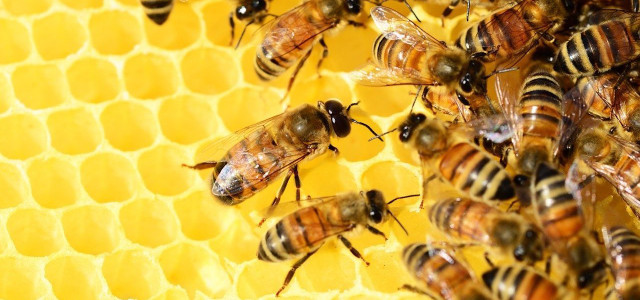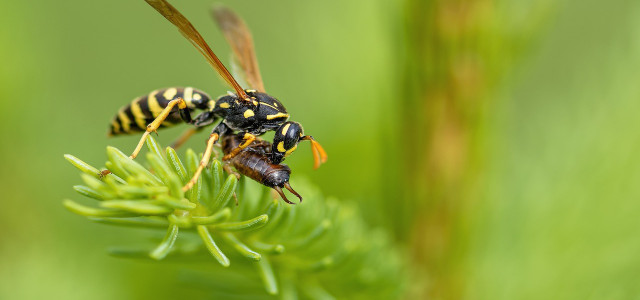We know that they can pack a painful sting, but are bumble bees dangerous? We’ll review some basic facts, possible dangers, and safety tips to see what all the buzz is about.
Are bumble bees dangerous? Chances are, while you may know why bumble bees are so feared, you may not know why these iconic fuzzy insects have so much importance as pollinators.
As pollinators, bees enable plants to reproduce by visiting flowers in search of nectar or pollen. In fact, bumble bees are more effective pollinators than honey bees because they visit a wider variety of plants. Many bumble bees are native to North America and are thus specially adapted to the wildflowers here. Some native crops, such as blueberry, cranberry, raspberry, squash, pepper, and tomato are dependent on bumble bees as their primary pollinators.
Despite their essential role for native wildflowers and crops, American bumble bee populations have dropped nearly 50 percent in the past 50 years, likely due to a combination of factors such as pesticides, habitat loss, and climate change. For this reason it is important to support and learn to live with bees, while also being aware of how to keep safe.
Are Bumble Bees Dangerous? Risk Factors.
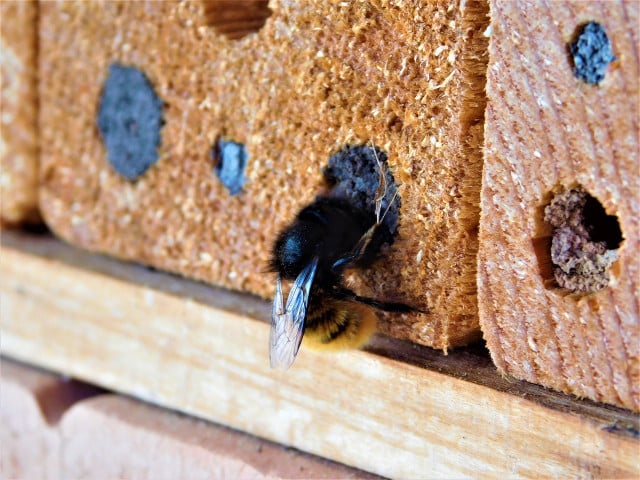


(Foto: CC0 / Pixabay / topicsbest)
Whether bumble bees are dangerous or not largely depends on how you treat them. Although they are much more docile than wasps and less prone to swarm than honey bees, they can become aggressive if they think you are a threat. Here are some factors that may make bees more dangerous:
- Unlike honey bees, bumble bees do not die after one sting, and can thus sting multiple times.
- Bumble bee build nests in hidden areas that are easy for people to mistakenly disturb: underground burrows, beneath piles of leaves, or even in the cracks of a house’s masonry. Although these nests are usually small, bumble bees can attack if the nests are disturbed.
- You are most likely to encounter bumble bees (and thus get stung) while they are foraging for flowers, often on sunny, mild days. Bees are usually docile and will ignore nearby people, but can become dangerous if they feel threatened, usually when their flowers are disturbed.
- Bumble bee populations peak in late summer and start to decline when flowers become more scarce. It’s during this time that they are hungriest and may approach humans with sodas, juices, or other sweet liquids, thus increasing the likelihood for stinging.
Minimizing Bumble Bee Dangers
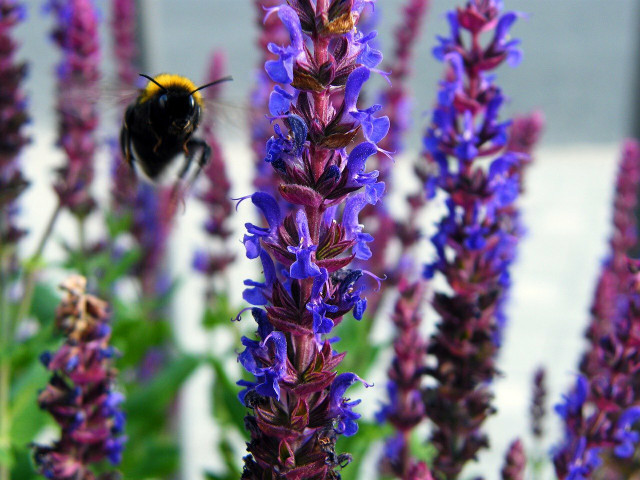


(Foto: CC0 / Pixabay / AndreasFranke)
While it is impossible and unnecessary to avoid them entirely, there are steps you can take minimize how dangerous bumble bees can be in different situations. Here are some important safety tips:
Staying Safe Outside:
- Avoid bee nests or dense flower growth (such as flowering trees). Bees may feel threatened if you brush up against their flower.
- Avoid wearing sweet smelling perfumes or bright floral prints (especially with blue or purple flowers), otherwise bees may mistake you for their favorite food.
- Avoid walking around barefoot, especially if you have clover or dandelions in your yard.
- If you are worried about bees nearby, simply walk away. Bumble bees will not give chase unless they perceive you as threat, so never swat or blow at them (the CO2 in your breath can alarm them). This also applies if a bee lands on you: shake it off or use your hand to gently brush it away. If you think a bee is chasing you, go indoors immediately.
- Avoid leaving opened sugary beverages outside as this will attract not only bees, but wasps, flies, and other hungry insects. Make sure to keep a lid on sweets when eating outside.
Bumble Bee-Proofing your Home:
- Get screens for your windows so you can enjoy the summer breeze without pests invading your home (bee or otherwise).
- Fill any ground-level cracks or holes near your house to prevent bumble bees from making nests.
- Plant flowers such as geraniums, marigolds, pansies, or roses near your home since these are unattractive to bees.
- Likewise consider planting flowers for bumble bees away from your home to divert bees elsewhere while also providing them with a food source. This is especially important for early spring and autumn, when flowers are more scarce. Some bumble bee favorites include chives, lavender, asters, sunflowers, hollyhock, thistles, salvia, or even a pollinator seed mix (available on Amazon**).
Bumble Bee Stings: Are they Dangerous?
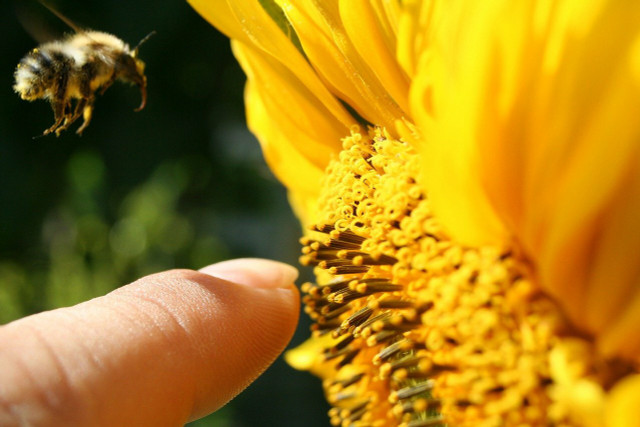


(Foto: CC0 / Pixabay / schauhi)
Despite being known for their cute, chubby appearance and important ecological role, the most dangerous aspect of a bumble bee is its painful sting. If prevention doesn’t work, here’s what you can do in the event of a sting:
- Although more of a problem with honey bees, if any bee has stung you, it will release a chemical signal that alerts other bees to a threat. Make sure to leave the area immediately to prevent further stinging and wash the site of the sting to erase the chemical trail.
- Most people who are stung by a bumble bee will experience an immediate sharp pain and raised red welt at the site of the sting, which can often cause larger swelling if stung on the face or throat. Stings are usually harmless and the pain and swelling often subsides within a few hours without complications. Antihistamine tablets or ointments can minimize the pain and swelling. For more details, check out these seven natural home remedies for bee stings
- Bumble bee stings are only dangerous to the one percent of Americans with a stinging insect allergy, which can result in persistent swelling and redness. In rarer cases, life-threatening anaphylaxis can occur, which can cause trouble breathing, severe facial swelling, hives, or rapid pulse. While antihistamines can ease milder symptoms, severe allergies require either immediate injection of epinephrine (such as an EpiPen) or emergency medical attention to prevent anaphylaxis.
- Contrary to popular belief, children are actually less likely to have severe reactions than adults.
How to Safely Remove a Bumble Bee From Your House
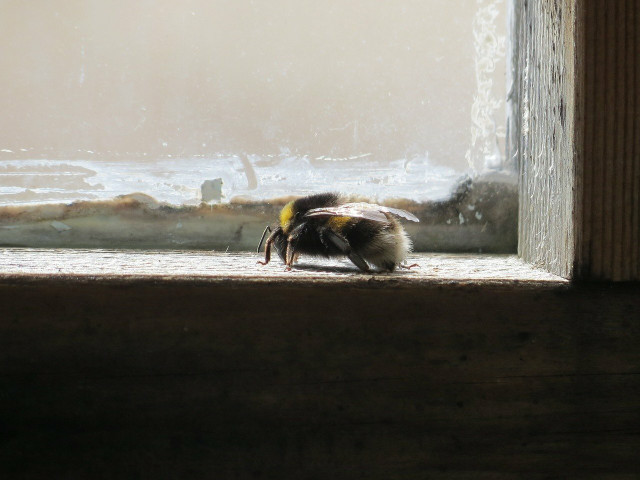


(Foto: CC0 / Pixabay / 2751030)
Unlike flies or even spiders, bees can be more dangerous in the home because they can both fly and sting. Nonetheless, it is important to avoid killing bees due to their beneficial role as pollinators and already declining numbers. Fortunately, bumble bees can be removed simply and safely:
- Open a door or window: Although not a guaranteed method, this allows the bee to fly out with the least amount of interaction.
- Use a cup and paper: This method requires some care and caution. Make sure the bee is resting on a flat surface. Find a glass or hard plastic cup (preferably clear) and quickly place it over the bee. Next slide any paper (preferably a thicker, stiffer kind such as cardstock) under the cup to trap the bee inside. Carry the bee outside and release it (either by setting the cup down and removing the paper to let the bee fly away, or by simply “pouring” the bee out of the cup and onto a soft surface such as grass). Although the bee will likely be too confused by this experience to see you as a threat, you can head back inside just in case.
- Use food as a lure: Bees burn energy quickly and will die if they go as much as one day without food, therefore don’t wait to remove a bee. Fill a small surface (such as a large jar lid) with highly concentrated sugar water and either use it as a lure to coax the bee outside or to trap it more easily under a cup. If the bee has been in your house long enough, it will likely be too tired to be a threat.
- Since bees naturally fall asleep with low light and temperature, you can wait until evening for removal.
Read on:
- Are Honeybees Endangered? How to Help the Honeybee
- 10 Small Ways to Help Bees That Will Make a Difference
- 11 Flowers for Bees: Turn Your Garden or Balcony Into a Bee Paradise
Do you like this post?







